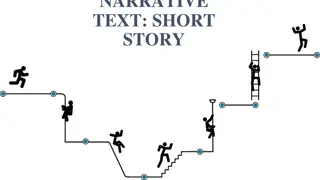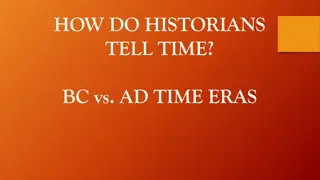Planning and Writing Non-Chronological Reports
Aimed at guiding readers in creating their own non-chronological reports, this content discusses the key elements required in such reports, like clear titles, introduction paragraphs, and subheadings. It emphasizes the importance of being knowledgeable about the chosen topic and provides suggestions for potential report subjects, such as animals, historical events, or famous individuals. Planning activities and research tips are also included to help authors craft informative and engaging reports.
Download Presentation

Please find below an Image/Link to download the presentation.
The content on the website is provided AS IS for your information and personal use only. It may not be sold, licensed, or shared on other websites without obtaining consent from the author. Download presentation by click this link. If you encounter any issues during the download, it is possible that the publisher has removed the file from their server.
E N D
Presentation Transcript
Non-chronological reports Can you remember what a non-chronological report is?
Non-Chronological reports Aim to give us information on a topic. Written to give other people information. Useful for studyingthings we don t know a lot about. Non-chronological reports can be read in any order. Written in paragraphs. Contain an introductionand many small sections of information. Reports contain specific features.
Over the next two days, we are going to plan and write our own Non-Chronological reports. You have the freedom to plan a report about anything you want to teach others about. You might choose: Your favourite animal Your favourite computer game Space and the planets A famous historical event A famous person The list is endless.. But remember, you have to know facts about the topic or be able to do some research. You are the author and the author must be an expert!
So what do we need in our report? A clear title Your title needs to tell the reader exactly what your report is about. They can be plain and simple or you can add adjectives to draw the reader in. Here are some examples: The wonderful world of Sloths Dolphins Fantastic Florence Nightingale Revolting Romans Magical Minecraft The Great Fire of London Space Decide what your report is going to be about and plan your title now. Write it down at the top of your planning page I wonder Can you guess my title Year Two?
So what do we need in our report? An introduction paragraph This tells the reader what your report is about. This is general information. You are going to give them more detail in your sections. It s a good idea to include a question to engage the reader too! Think of a couple of things you want to tell your reader in the introduction and make notes on your plan. Today we are planning. You don t need to write full sentences, just notes to remind you. Here is mine to give you an idea
So what do we need in our report? Subheadings These are mini titles that tell you what a small section of writing is going to be about. They can be questions or simple statements. What do sloths look like? or Appearance Plan your first section What is your subheading? What are you going to tell people in this section? Make notes like you did for your introduction. If you need to do some research to get extra facts, now is a good time to build this in. You could research using books you have at home, using the internet or even watching video clips like animal documentaries. Check with an adult before you watch any videos online please.
So what do we need in our report? Subheadings You could research using books you have at home, using the internet or even watching video clips like animal documentaries. Check with an adult before you watch any videos online please. Now plan another 2 sections for your report in the same way. Remember: What is your subheading? What do you want to tell the reader in that section. Research if you need to.
So what do we need in our report? Fact boxes These are a great way to draw your reader in by giving them extra, really interesting facts that might not always fit into your subheadings. Plan yourself at least 1 fact box to surprise your reader.
So what do we need in our report? Pictures and captions Pictures help the reader see what you are talking about. Captions are a short sentence to say what is happening in the picture. What pictures and captions will you include? Plan at least 1. You could use pictures from the internet in your report or you could draw your own! A two-toed sloth A three-toed sloth
If you are writing about something historical or a famous person who isn t alive any more. Then you can use the past tense. Other things to know The Romans were.. Florence Nightingale was Non- Chronological reports are usually written in the present tense. We write as if things are happening now. Sloths are Sloths have . They are .. You can .. Non-Chronological reports are usually written in the third person. We use words like . He She They It
Great Job! You have planned a report all about a topic of your choice. Tomorrow, we are going to put all of this together to create a report that uses all the features that we have learnt about today. It might look something like these! Can you spot the features we have talked about today?































